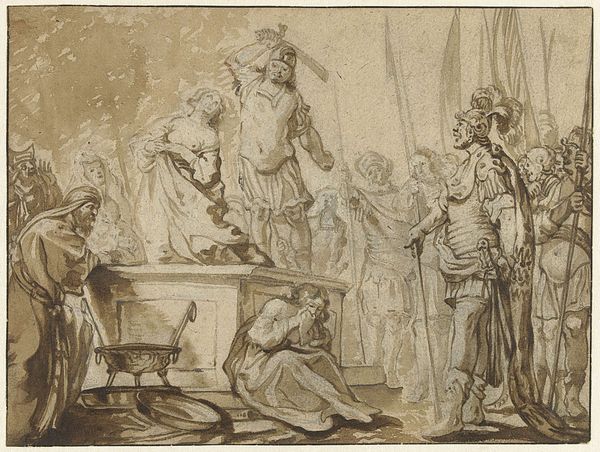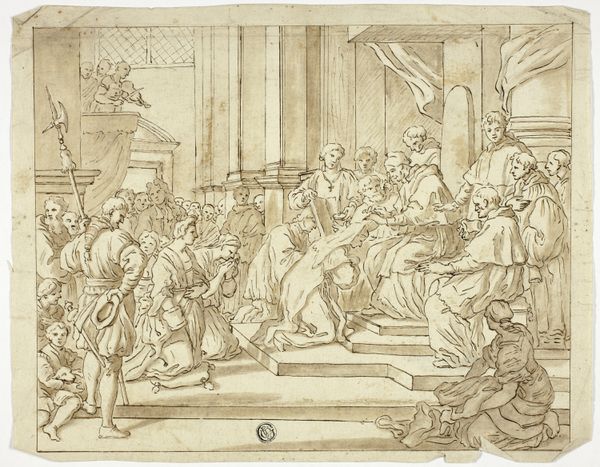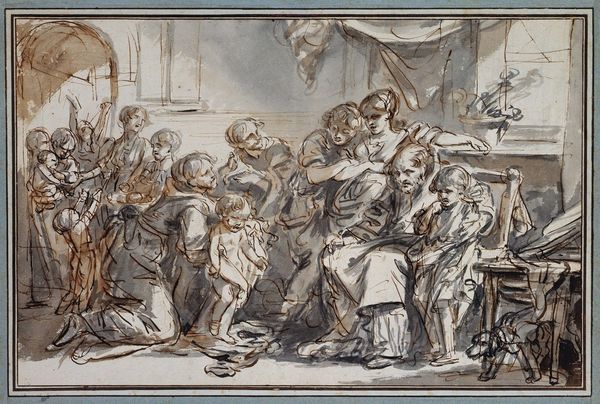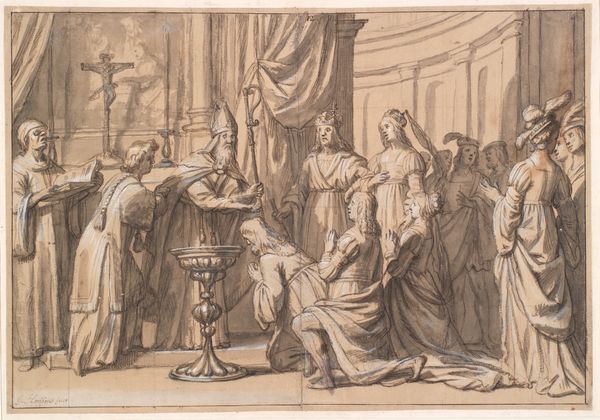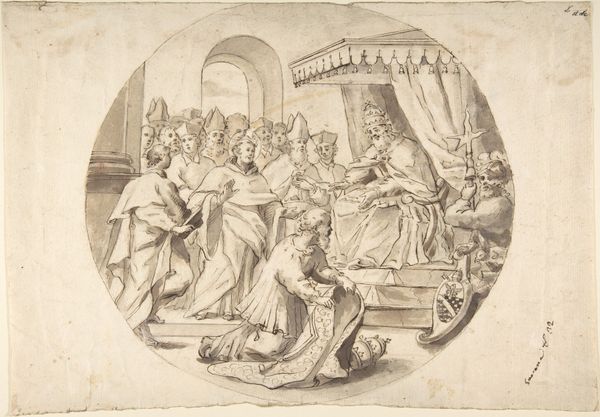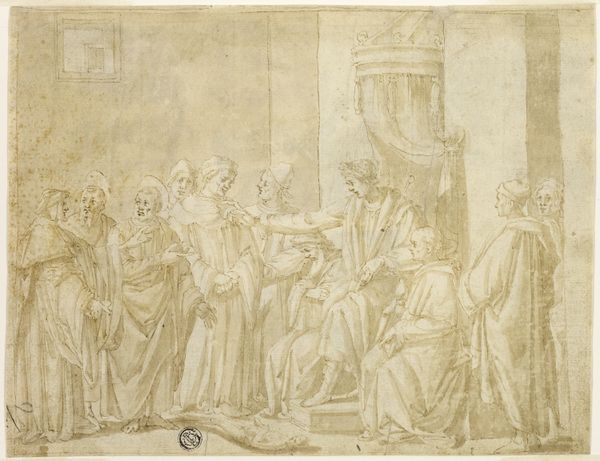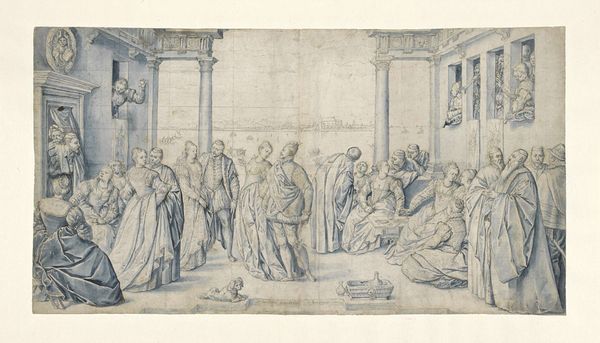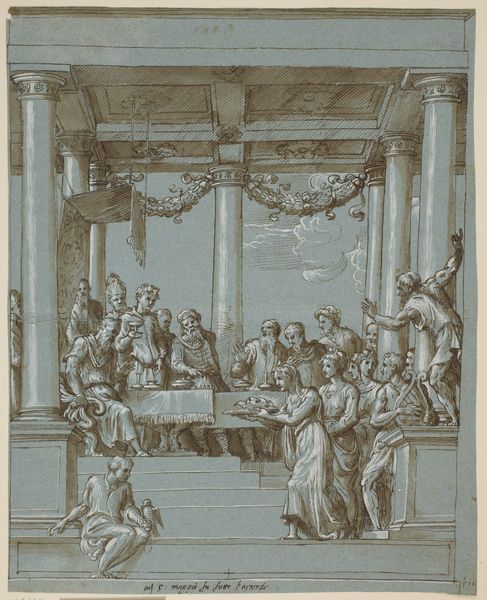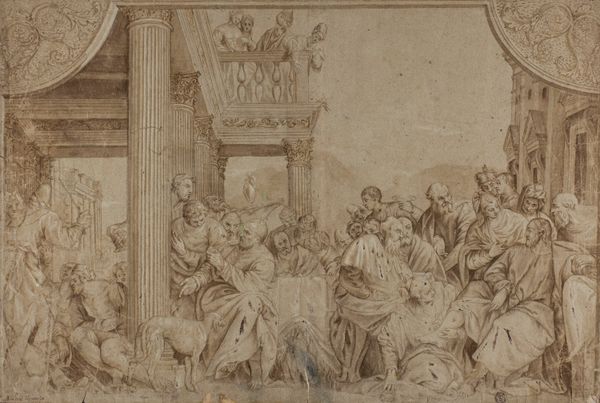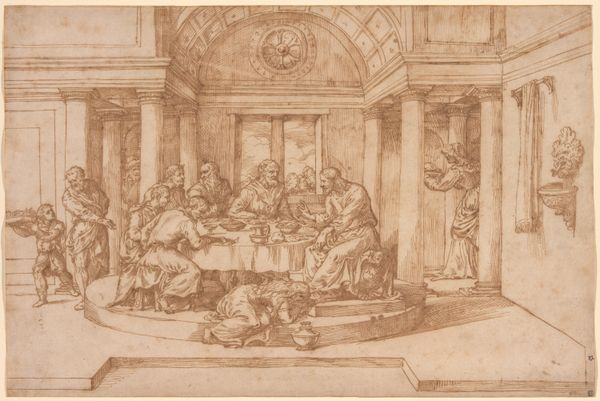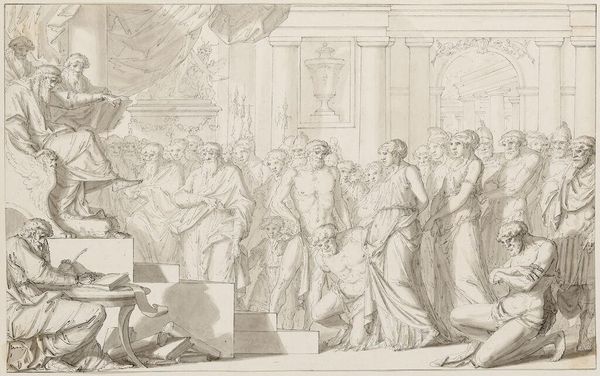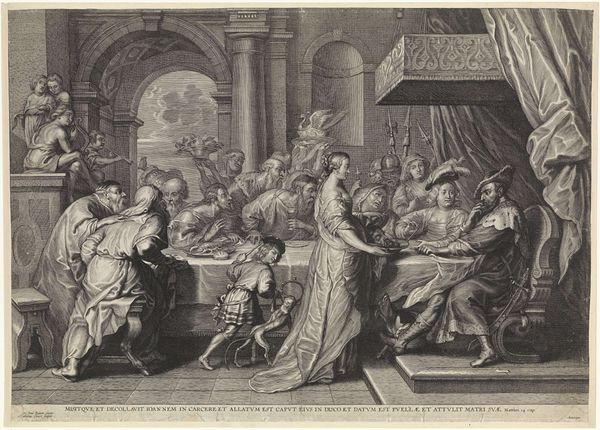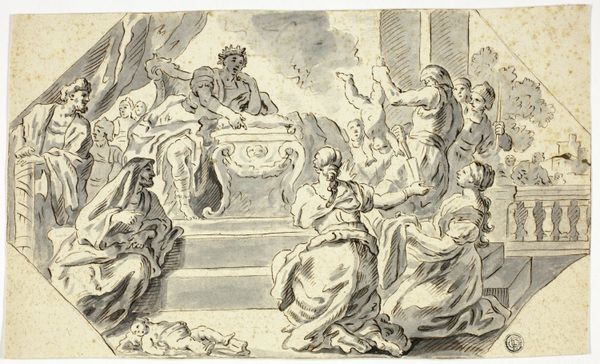
drawing, charcoal
#
drawing
#
allegory
#
narrative-art
#
baroque
#
classical-realism
#
charcoal drawing
#
figuration
#
charcoal
#
history-painting
#
academic-art
#
watercolor
Copyright: Public Domain: Artvee
Editor: This is "The Continence of Scipio," a charcoal and watercolor drawing by Francesco Solimena, dating sometime between 1657 and 1747. I’m struck by how staged and theatrical it feels, almost like a scene from a play. What are your thoughts on this drawing, and how do you interpret its story? Curator: You're right, it has a decidedly performative quality. Beyond the theatrical staging, I see a carefully constructed narrative that reinforces certain power dynamics and moral ideals of its time. It's crucial to recognize how art, particularly history painting, often serves as a tool for social and political commentary. What do you observe about the figures and their relationships? Editor: Well, Scipio seems to be the clear focal point. He’s elevated, literally, on a platform. And the way the woman is kneeling before him…it feels symbolic of submission, perhaps? Curator: Exactly. It's not just about individual submission but also the subordination of certain identities and narratives within the larger historical context. Think about how this image might have been received in an era grappling with issues of conquest, power, and gender roles. Who is being represented, who is being silenced, and why? Consider also how Solimena's Baroque style – the dramatic composition and emotional intensity – works to further these themes. Editor: So, it's less about the historical event itself and more about the values and power structures the artist is promoting? Curator: Precisely. It’s a visual argument, contributing to an ongoing dialogue about ideal leadership, gender roles, and the spoils of war. Recognizing these elements allows us to engage critically with the work and its underlying messages. Editor: I never considered how an artwork could actively participate in these complex cultural conversations. It makes me look at it differently, and more critically! Curator: And hopefully more thoughtfully aware of the power that images wield, even centuries later.
Comments
No comments
Be the first to comment and join the conversation on the ultimate creative platform.
